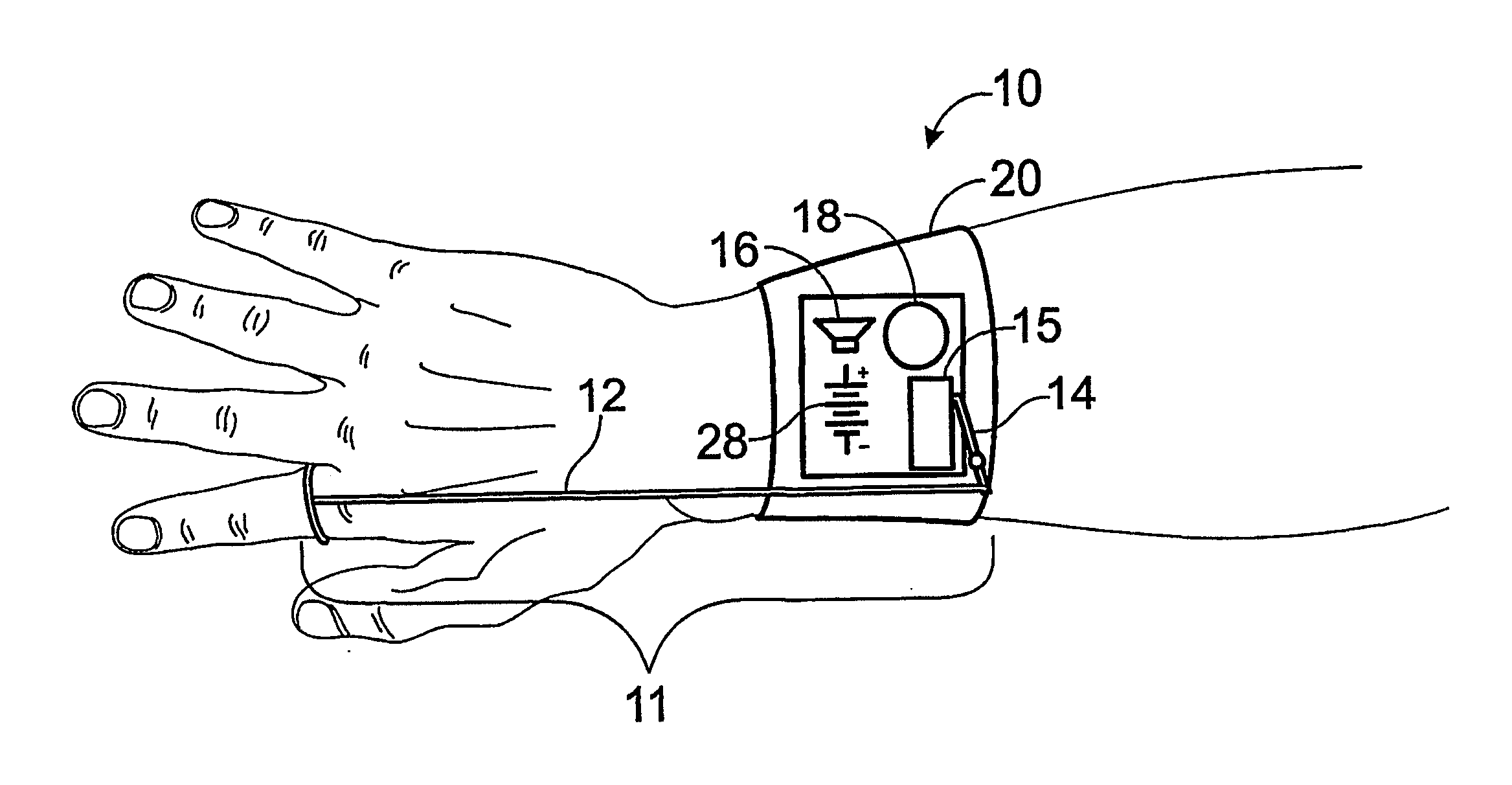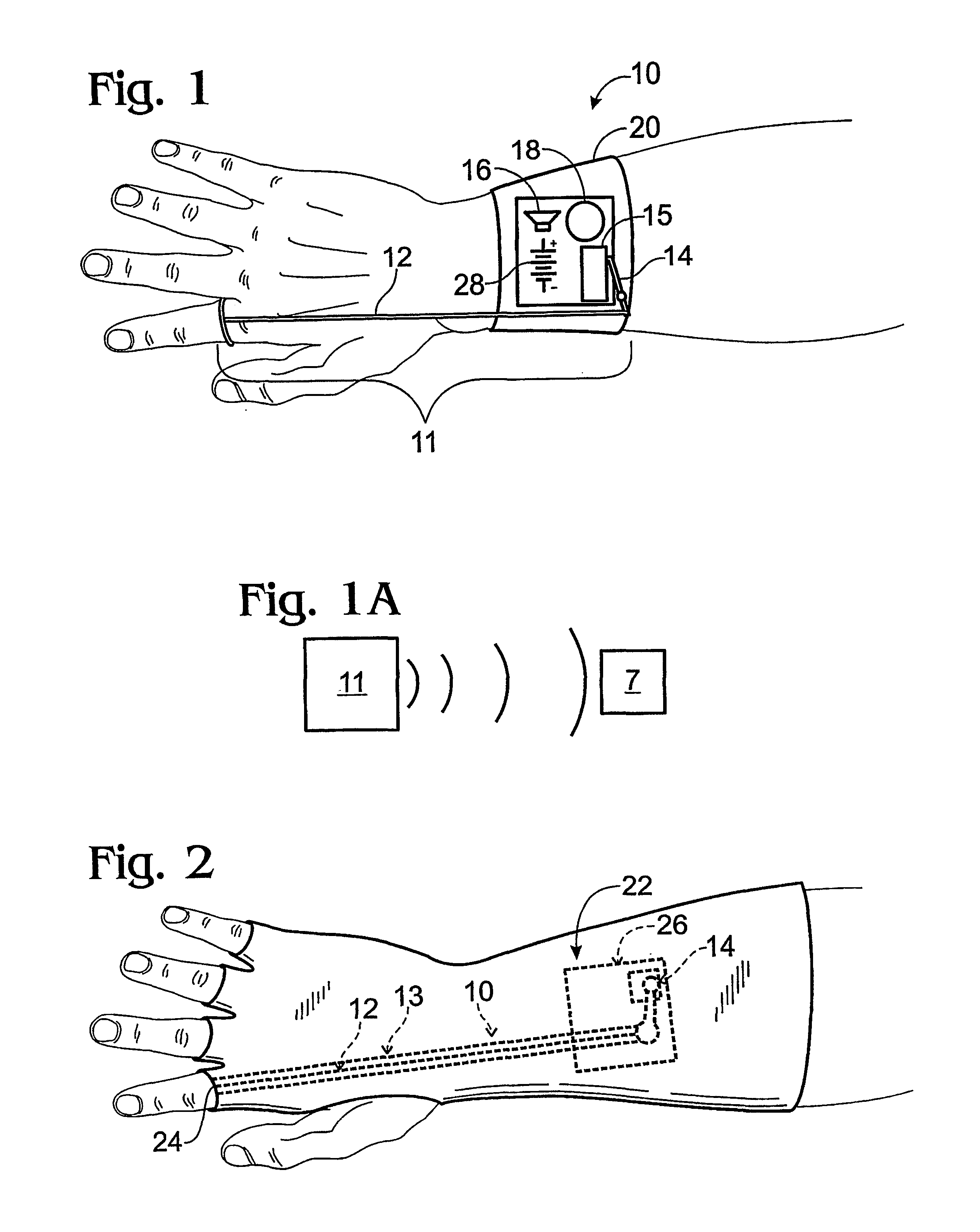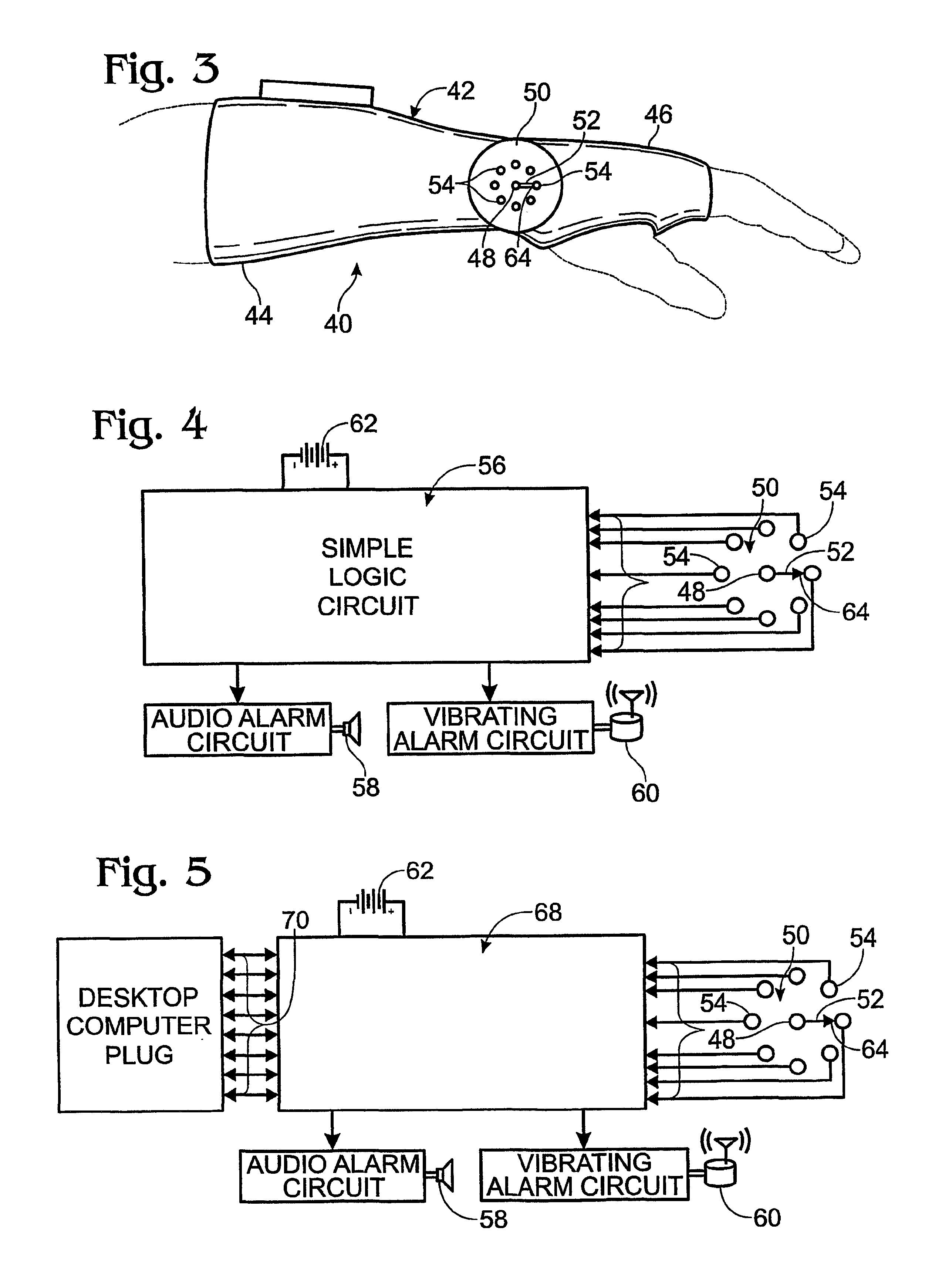Systems for the prevention or treatment of carpal tunnel syndrome
- Summary
- Abstract
- Description
- Claims
- Application Information
AI Technical Summary
Benefits of technology
Problems solved by technology
Method used
Image
Examples
Embodiment Construction
Referring to FIG. 1, there is shown an apparatus 10 for preventing and treating carpal tunnel syndrome installed on the right upper extremity of a patient. The apparatus 10 in the form shown includes a switch mechanism 11 comprising a lever 14 of a microswitch 15 and a flexible string or cord 12, such as an elastomeric band, on the dorsal side of the hand. The distal end of the cord 12 is secured to the index finger in the form shown and coupled to the lever 14 at the other end. Alternatively, the distal end of the cord may be secured to any suitable point on the dorsal side of the hand. The lever 14 is positioned proximally of the wrist of the wearer (as viewed in FIG. 1) and carried by or otherwise mounted to a suitable splint or other mounting device adapted to be worn on the patient. In the illustrated embodiment, the splint comprises a band or wrap 20 secured to the forearm of the wearer. The lever 14 is electrically connected to one or more conventional warning mechanisms, suc...
PUM
 Login to View More
Login to View More Abstract
Description
Claims
Application Information
 Login to View More
Login to View More - R&D
- Intellectual Property
- Life Sciences
- Materials
- Tech Scout
- Unparalleled Data Quality
- Higher Quality Content
- 60% Fewer Hallucinations
Browse by: Latest US Patents, China's latest patents, Technical Efficacy Thesaurus, Application Domain, Technology Topic, Popular Technical Reports.
© 2025 PatSnap. All rights reserved.Legal|Privacy policy|Modern Slavery Act Transparency Statement|Sitemap|About US| Contact US: help@patsnap.com



